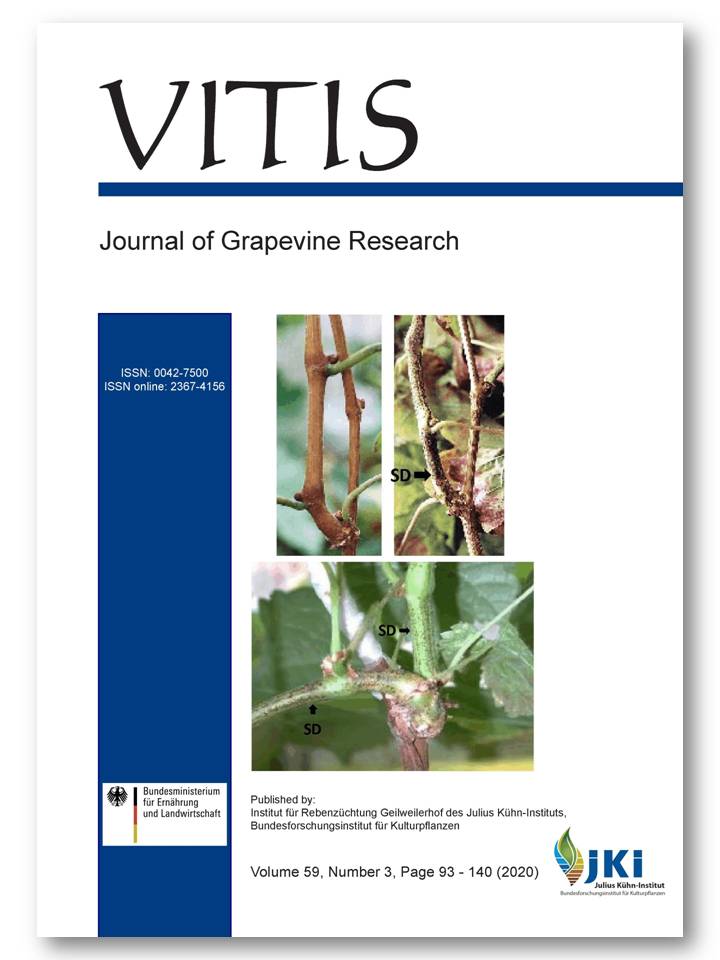Using rootstocks to lower berry potassium concentrations in 'Cabernet Sauvignon' grapevines
DOI:
https://doi.org/10.5073/vitis.2020.59.117-126Keywords:
grape; 'Cabernet Sauvignon'; rootstock; potassium; VitisAbstract
Potassium is the most abundant cation in grape berries. It has important roles in grapevine physiology and winemaking. This study investigates the feasibility of using rootstocks to lower berry potassium concentrations ([K]) in 'Cabernet Sauvignon' grapevines. The ultimate target is to achieve lower pH and higher titratable acidity (TA) in grape juice so as to bring down the cost of acid adjustment during winemaking. The specific objective here is to provide new insights into the potential of particular rootstocks to modify K uptake by 'Cabernet Sauvignon' grapevines and their partitioning and accumulation into grape berries.
The vineyard soils of a replicated rootstock trial located in the Limestone Coast of South Australia were characterised. Petiole, berry and juice nutrient content were assessed at oenological maturity of 'Cabernet Sauvignon' grown on eight different rootstocks. Rootstock had an impact on cations of the vegetative tissue of 'Cabernet Sauvignon', with Merbein 5512 having the lowest petiole [K]. The concentrations of major cations in the berry were, however, not altered by rootstock. While no particular rootstock stood out in limiting 'Cabernet Sauvignon' berry K accumulation, berries grown on the 'Börner' rootstock tended to have slightly lower concentrations (< 10 %) relative to vines on their own roots.
Across the rootstocks, juice pH tended to increase with greater juice [K], while juice TA tended to decrease with greater juice [K]. It was found that juice TA was higher for the rootstocks 140 Ruggeri and 110 Richter, and juice pH tended to be lower for the rootstocks 110 Richter, 140 Ruggeri, Merbein 5512 and Merbein 5489. There was no effect of rootstock on total soluble solids.
Downloads
Additional Files
Published
Issue
Section
License
The content of VITIS is published under a Creative Commons Attribution 4.0 license. Any user is free to share and adapt (remix, transform, build upon) the content as long as the original publication is attributed (authors, title, year, journal, issue, pages) and any changes to the original are clearly labeled. We do not prohibit or charge a fee for reuse of published content. The use of general descriptive names, trade names, trademarks, and so forth in any publication herein, even if not specifically indicated, does not imply that these names are not protected by the relevant laws and regulations. The submitting author agrees to these terms on behalf of all co-authors when submitting a manuscript. Please be aware that this license cannot be revoked. All authors retain the copyright on their work and are able to enter into separate, additional contractual arrangements.



